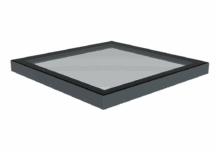Theresa May has accepted the recommendations made by Sir Martin Moore-Bick as to what the public enquiry for Grenfell Tower should consider.
In a letter to the Prime Minister, Sir Martin outlined the terms of reference for his enquiry:
- The immediate cause or causes of the fire and the means by which it spread to the whole of the building.
- The design and construction of Grenfell and the decisions made relating to its modification, refurbishment and management.
- The scope and adequacy of current Building Regulations, fire regulations and other legislation, guidance and industry practice relating to the design, construction, equipping and management of high-rise tower blocks.
- Whether such regulations, legislation, guidance and industry practice were complied with in the case of Grenfell Tower and which fire safety measures were adopted in relation to it.
- The actions of the local authority or other responsible bodies for receiving and acting upon information obtained from residents or available from other sources (such as information from fires in other buildings) relating to the risk of fire at Grenfell Tower, and the action taken in response to such intelligence.
- The fire prevention and fire safety measures that were in place at Grenfell Tower on 14 June 2017.
- The response of the London Fire Brigade.
- The response of central and local government in the days immediately following the fire.
The Institution of Occupational Safety and Health (IOSH) says it has contributed to one of the open meetings and recommended that causation, design and construction, regulation, compliance and resourcing are examined as part of the public enquiry.
Richard Jones, head of policy and public affairs at IOSH, said: “It’s vital that this inquiry into the Grenfell Tower fire becomes a watershed for fire safety and helps prevent future tragedies.
“Agreeing these terms of reference will help ensure key areas of weakness are examined and enable the chair to make the necessary recommendations to improve both current and future fire risk management.”
Sir Martin is expected to hold a preliminary hearing in September and will provide an initial report by Easter 2018, dealing with the cause of the fire and why it spread throughout the building.
The Government has also announced that two wall cladding systems have passed the latest fire safety tests. The fourth test was of a wall cladding system consisting of Aluminium Composite Material (ACM) cladding with a fire-resistant polyethylene filler (category 2 in screening tests) and stone wool insulation (a form of mineral wool). This combination of materials passed the test.
This fifth test was of a wall cladding system consisting of ACM cladding with a limited combustibility filler (category 1 in screening tests) with PIR foam insulation which was the second system to pass.
The Government’s Expert Panel says that the results show that this combination of materials can be compliant when installed and maintained properly. While Government has not been informed of any tall buildings over 18m in England using this particular combination of materials in their wall system, it could offer a possible solution for some buildings with other cladding systems which have been identified as a fire hazard through previous large-scale tests.
One other test was of a wall cladding system consisting of Aluminium Composite Material (ACM) cladding with a fire-retardant polyethylene filler (category 2 in screening tests) with phenolic foam insulation.
The government’s expert panel advises that the results show that the combination of materials used in the test does not meet current Building Regulations guidance.
Initial screening tests have identified 22 buildings over 18m tall in England known to have a combination of ACM with a fire-retardant polyethylene filler with phenolic foam insulation. Cladding samples from each of these buildings had already failed earlier combustibility tests conducted by BRE and their owners were sent Government advice detailing the immediate interim safety measures that needed to be completed. Appropriate measures are said to have been put in place for all 22 of these buildings.
Government has also provided these building owners with additional detailed advice setting out the actions they need to take to ensure the safety of residents going forward. The Government says it is working closely with these building owners to ensure this advice is being followed.



